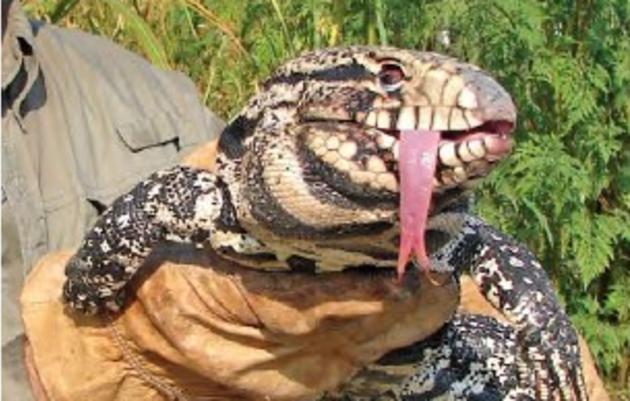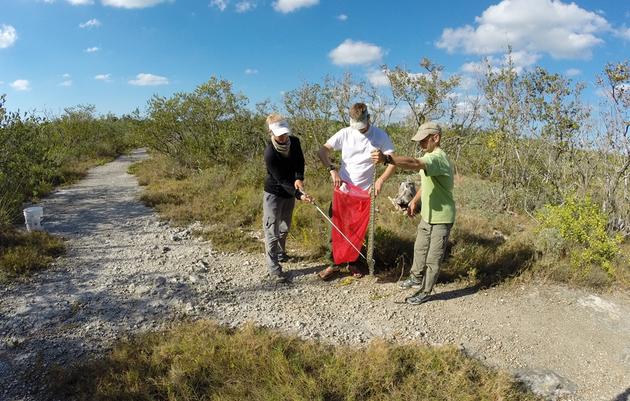Everglades Science
Audubon Florida’s greatest contributions to the Everglades are our research and monitoring, both of which provides critical information on the health of this ecosystem. The data and analysis are used to guide decision-makers in restoration and water management decisions.
Everglades Science Center at Tavernier
The Everglades Science Center at Tavernier (ESC) was established in the Florida Keys in 1939 by National Audubon's first Director of Research, Robert Porter Allen. Allen began a full-time study of Roseate Spoonbills, living among them in a tent for weeks at a time. His research changed how scientists studied birds and began 75 years of Audubon data investigating the Roseate Spoonbill and its habitat.
Currently, ESC scientists are studying the flow of freshwater into Florida Bay and the impacts that the diversion of water has had throughout the Greater Everglades Ecosystem. Experiments link changes in freshwater flow to decreased plant production and subsequent loss of small fishes. These are vital parts of the ecosystem, making up the food base for many higher predators such as game fishes, crocodilians, wading birds, and birds of prey. Roseate Spoonbill studies also continue today, and nesting information collected across Florida Bay demonstrates how spoonbills are sensitive to changes in the quantity and quality of their foraging habitat. The information is then used to identify restoration needs and as projects are completed, the data is used to ultimately answer the question - is restoration a success?
Learn more about Florida Bay at www.RestoreFloridaBay.org.
Lake Okeechobee Watershed
Audubon’s Okeechobee program began in 1936 with the hiring of Warden Marvin Chandler who patrolled the Lake, the Kissimmee Prairie, and Fisheating Creek regions. Three more members of the Chandler family worked successively until the 1990s. With the Florida Fish and Wildlife Conservation Commission fielding an increasingly large law enforcement force, Audubon’s Lake Okeechobee focus turned more toward the science of habitat restoration and species protection.
Two major problems for Lake Okeechobee are water level control and nutrient enrichment. Audubon science staff study ways to capture more water during wet periods and clean it before it flows into the Lake. Moreover, Audubon advocates for water resource projects that not only to improve the Lake, but restore watershed habitats as well (e.g. the Kissimmee River Restoration project). Staff members also actively participate in advising water management decisions in regional water bodies that will improve ecosystem health, and describe how aquatic plant management can be conducted in ways that benefit or harm birds and habitat. Finally, staff study regional bird life, especially the Snail Kite and Florida Grasshopper Sparrow, and recommend solutions to preserving and improving habitat for these endangered species. Recently, science staff has actively participated in a working group for the sparrow and helped start a kite working group.
Corkscrew Swamp Sanctuary
Corkscrew Swamp Sanctuary’s old growth bald cypress forest is the nation’s most celebrated historic Wood Stork colony. Since 1958, Audubon has monitored nesting at the colony, putting together the longest running continuous data set on Wood Stork nesting in the nation. As Everglades restoration plans are developed and implemented, Corkscrew scientists have been enlisted to consult and advise on ways to maximize foraging benefits for Wood Storks and other wading birds.
Another important science focus at Corkscrew Swamp Sanctuary is identifying ways to reform the process of mitigating for the loss of wetlands. A tracking tool developed by Corkscrew staff has indicated that some types of wetlands are undervalued, therefore reducing the overall habitat available for Wood Storks and other wildlife when development occurs. Additionally, the Wetlandsbank Group completed the Panther Island Mitigation Bank adjacent to Corkscrew in 2009. The restoration successfuly brought high-quality wetland functions back on what had been agricultural fields. Audubon accepted the responsibility of serving as the long term steward of Panther Island, which is now an important part of the Corkscrew Swamp Sanctuary
Related
Invasive Species Task Force
A coordinated effort between Audubon Florida’s policy, science, land management, and education teams.
Conservation – Yes, There is an App for That
New smartphone app makes invasive species reporting user-friendly and fun.
How you can help, right now
Donate to Audubon
Help secure the future for birds at risk from climate change, habitat loss and other threats. Your support will power our science, education, advocacy and on-the-ground conservation efforts.
Become a Monthly Donor
Donating monthly is flexible, easy and convenient and makes you a champion birds can count on, no matter the season.
Volunteers Needed
Florida's birds and wildlife need your time and energy. Learn how you can become a citizen scientist or a volunteer at one of our nature centers today.





